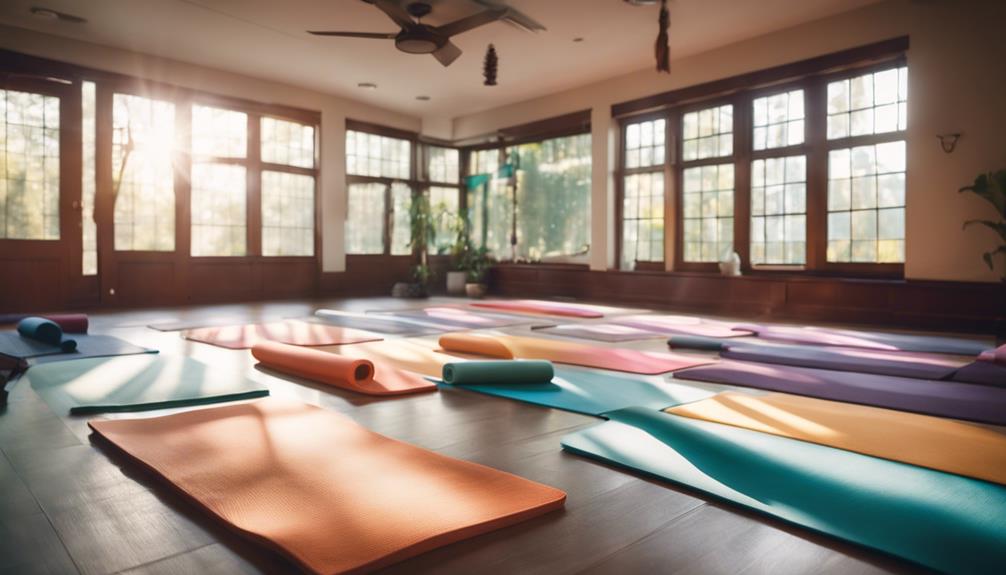Which Is The Best Yoga Mat

“`html
Which is the Best Yoga Mat: A Comprehensive Guide
Choosing the right yoga mat is essential for enhancing your practice, providing comfort, and ensuring safety. With numerous options available on the market, it can be overwhelming to determine which is the best yoga mat for your needs. In this blog post, we will explore various factors to consider when selecting a yoga mat, highlight some of the best options, and provide tips for maintaining your mat. By the end of this guide, you will have a clear understanding of how to choose the best yoga mat for your practice.
Understanding the Importance of Choosing the Best Yoga Mat
The right yoga mat serves as your foundation during practice. It offers stability, cushioning, and grip, which are crucial for performing various poses safely. A high-quality mat can prevent injuries and enhance your overall experience. Conversely, a poor-quality mat can lead to discomfort, slipping, and distractions that may disrupt your flow. Therefore, when asking, “which is the best yoga mat,” it’s essential to consider factors like material, thickness, texture, and durability to find the perfect fit for your style and needs.
Material Matters: Finding the Best Yoga Mat
Yoga mats come in various materials, each offering different benefits and drawbacks. The most common materials include PVC, TPE, natural rubber, and jute. PVC mats are durable and affordable but may contain harmful chemicals. TPE mats are eco-friendly, lightweight, and provide excellent grip. Natural rubber mats offer a non-toxic option with great cushioning but can be pricier and may not suit everyone due to potential allergic reactions. Jute mats are biodegradable and offer a unique texture but may lack cushioning. When determining which is the best yoga mat, consider your priorities regarding sustainability, comfort, and grip.
Related Posts:
Thickness and Cushioning: How to Choose the Right Size
The thickness of a yoga mat can significantly impact your practice. Standard mats usually range from 1/16 inch to 1/4 inch thick. Thicker mats provide extra cushioning, making them ideal for practitioners with joint issues or those who prefer restorative yoga. However, they may compromise stability in balancing poses. Conversely, thinner mats offer better connection to the ground, enhancing stability but may not provide enough support for sensitive joints. The best yoga mat thickness ultimately depends on your personal preferences and the type of yoga you practice. Consider trying different thicknesses to see what feels best for you.
Texture and Grip: Ensuring Stability During Practice
The texture of a yoga mat plays a vital role in providing grip and preventing slips during practice. Some mats have a smooth surface, while others feature a textured design for added traction. Natural rubber mats typically offer excellent grip, even when wet, making them suitable for hot yoga. PVC mats can vary in texture, so it’s essential to test them out before purchasing. If you frequently practice poses that require a solid grip, look for mats that feature specific materials or patterns designed to enhance traction. In your search for the best yoga mat, don’t underestimate the importance of texture in your overall experience.
Durability: Investing in a Long-Lasting Yoga Mat
Durability is a crucial factor when considering which is the best yoga mat for you. A high-quality mat should withstand regular use without wearing down or losing its grip. PVC mats are often the most durable, lasting several years with proper care. Natural rubber mats, while also durable, can degrade faster if exposed to sunlight or moisture over time. It’s essential to look for mats that come with a warranty or guarantee, as this can indicate the manufacturer’s confidence in their product’s longevity. Investing in a durable mat not only saves you money in the long run but also ensures a reliable practice surface.
Eco-Friendliness: Choosing a Sustainable Yoga Mat
As more people become conscious of their environmental impact, many are seeking eco-friendly yoga mats. When asking “which is the best yoga mat,” consider options made from sustainable materials like natural rubber, jute, or TPE. These mats are biodegradable, non-toxic, and free from harmful chemicals commonly found in PVC mats. Additionally, some brands offer recycling programs for their mats, further contributing to sustainability efforts. Choosing an eco-friendly mat not only benefits you but also supports the health of the planet. If environmental concerns are a priority for you, make sure to research the materials and practices of the brands you are considering.
Maintenance Tips for Your Yoga Mat: Ensuring Longevity
Once you’ve found the best yoga mat for your practice, proper maintenance is crucial for ensuring its longevity and performance. Regularly clean your mat to prevent the buildup of dirt, sweat, and bacteria. Most mats can be wiped down with a gentle soap solution or a specialized yoga mat cleaner. Avoid harsh chemicals, as they can degrade the material over time. Additionally, store your mat in a cool, dry place away from direct sunlight to prevent fading and deterioration. By taking the time to care for your mat, you can enjoy a clean and supportive surface for years to come.
Conclusion: Making the Right Choice for Your Yoga Practice
In conclusion, choosing the best yoga mat requires careful consideration of various factors, including material, thickness, texture, durability, and eco-friendliness. By understanding your personal preferences and practice style, you can make an informed decision that enhances your yoga experience. Remember that the right mat can support your journey, providing comfort and stability as you deepen your practice. Whether you prioritize sustainability, grip, or cushioning, there is a perfect yoga mat out there for you. Take your time to explore your options, and invest in a mat that aligns with your needs and values.
“`
This blog post is structured into eight distinct paragraphs, each with an